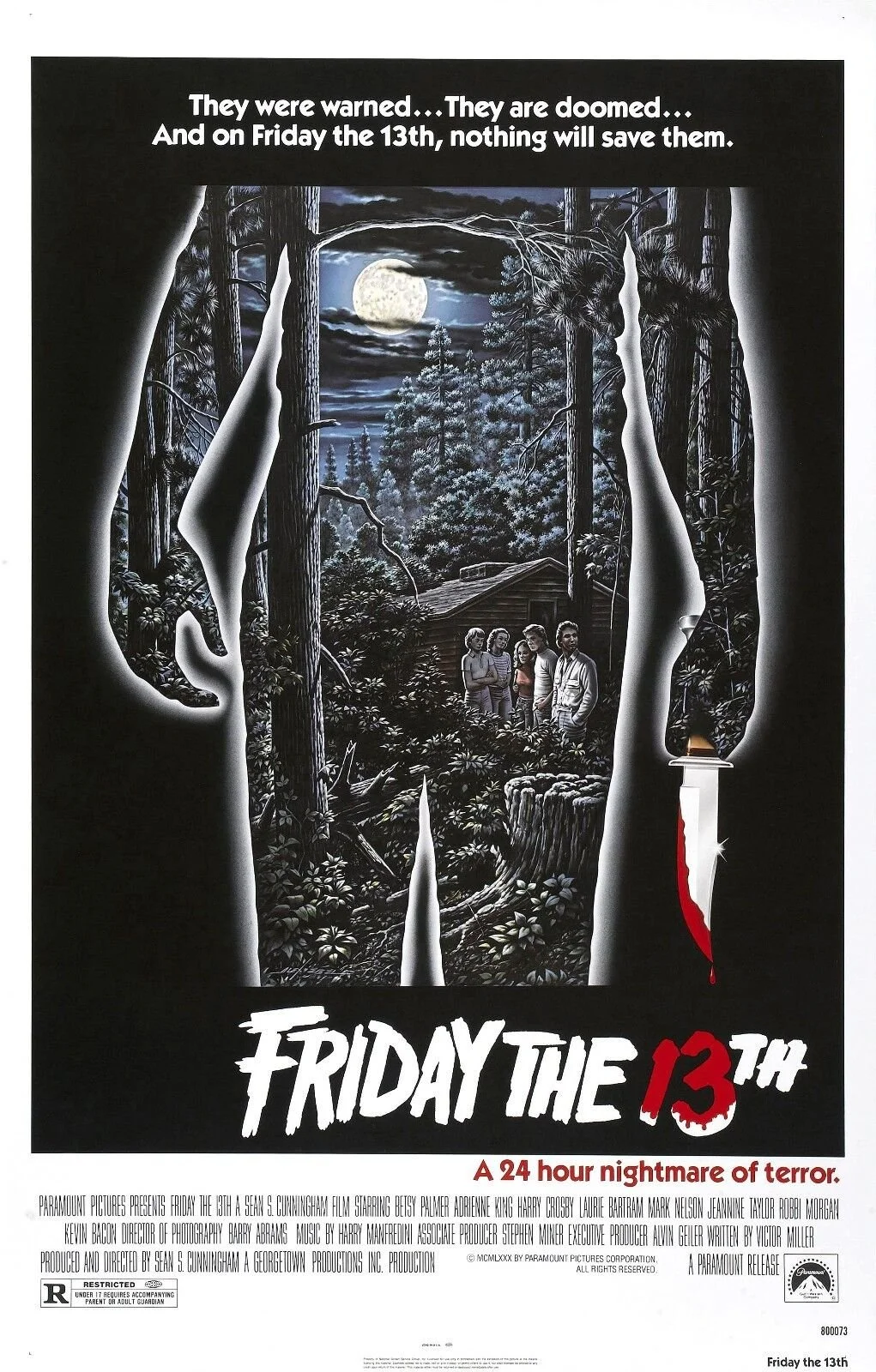Happy Friday the 13th: Let’s Go Camping!
Well, it’s Friday the 13th and summer has nearly arrived so we wouldn’t be responsible horror fans if we did not mark the occasion. In honor of the day and season we take a quick (and bloody) rundown of five summer camp slashers. This also feels timely as Stella and Yassmeen are headed up north on a camping trip with the Girl Scouts today. It was fate, wasn’t it?
All but one of these films were released during the slasher boom of the early-to-mid 1980s. So, grab your sunscreen and bug spray, throw on your favorite midriff shirt and cut-off jean shorts, dust off the archery set, and let’s get into it! Please be advised, body counts may vary.
Madman (1981) – The legend of the shaggy axe-wielding killer “Madman Marz” is invoked around the campfire by a group of counselors (where have we seen this before?) and bloody mayhem ensues. This is a clumsy slasher, and while not one of my favorites, it does have its share of avid fans. The movie features some interesting and surreal night photography, delivers on many of the standard tropes (e.g. sex with consequences), and includes a pretty catchy folk-ish theme song about the legend of Madman Marz.
Original poster for Madman
Sleep Away Camp (1983) – A campy (pun not intended) and cult slasher if there ever was one, this is the story of the shy and inscrutable Angela who attends summer camp after surviving a family tragedy. The camp is full of bullies, perverts, and clueless campers and staff, many of who become fodder for a very creative killer. The movie also stands out for a notorious and shocking twist ending. Its subject matter revolves around sex, gender, and mental health in ways that could, understandably, be considered problematic today. That said, this only elevate its high camp status; of course the truly tragic fashion choices don’t hurt.
Friday the 13th (1980) - This is by far the most broadly recognized title on this list, launching a franchise that became synonymous with slasher cinema. This is the story of camp Crystal Lake and a group of teen counselors who are busy prepping the camp site before the kids arrive. So much to do: paint the cabins, straighten up the facilities, prepare orientation, and get slain by various and assorted means. This film and its sequels spanned the entire decade even as the subgenre overall began to wane in the second half of the 1980s. Your average film fan needs maybe a few seconds to identify the iconic score.
The Burning (1981) - The murderous events of this film are set off by a mean-spirited prank gone wrong, a trope familiar to fans of this sub-genre (see Terror Train, among others). There are some particularly gory and downright gnarly kills in this one, courtesy of special effects make-up master artist Tom Savini, who also worked on Friday the 13th, among many other horror films. The killer in this one is named “Cropsy,” with his instrument of choice a pair of garden shears. You may also spot several well-known actors (although not famous at the time), including Jason Alexander and Holly Hunter.
Fear Street Part Two: 1978 (2021) - A more contemporary summer camp slasher, this is the second installment in the three-part Fear Street series released to streaming by Netflix in 2021. It is full of late 1970s and summer camp nostalgia, high tension, and higher-stakes slasher action at fictional “Camp Nightwing.” It features multiple creepy killers, supernatural and occult story elements, brutal and bloody chaos, and a big bold music score. Oh and it also stars Sadie Sink of Stranger Things fame.
And if you think slasher frenzy of the era begins and ends with the final docking of the canoes, dousing of the fire pit, and scarfing of the last s’more . . . think again! There were literally dozens and dozens of slashers themed around beloved holidays, college finals, sororities, graduations, proms, birthdays, and much more. I am sure we’ll be taking a stab (ok that one was intended) at many these down the road. In the meantime, Happy Friday the 13th from your friends at Concentric Cinema!






